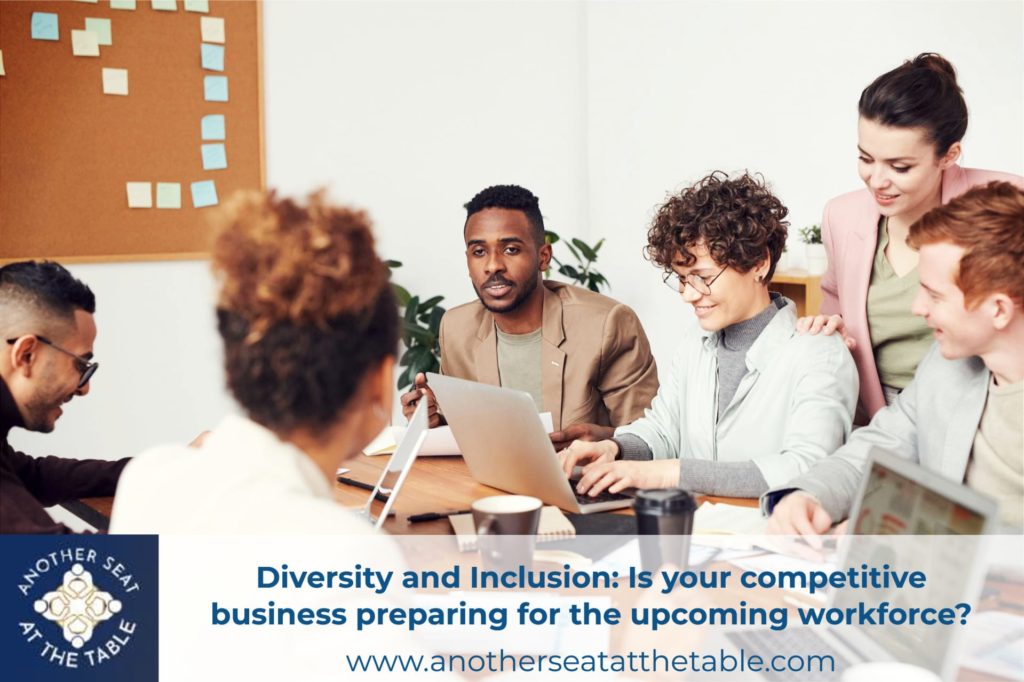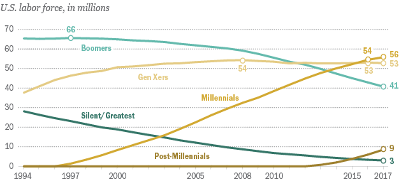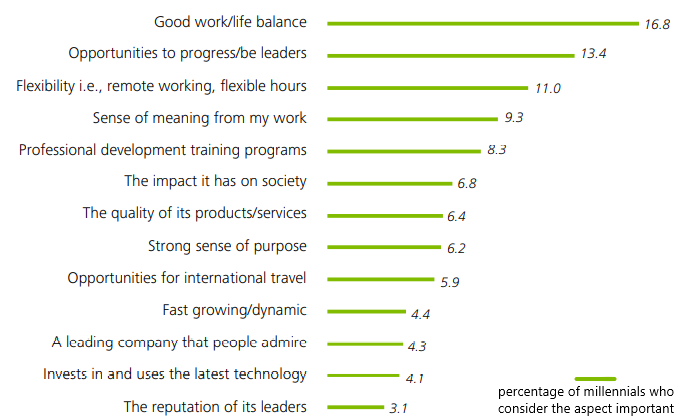
Diversity and inclusion at the workplace is one of the issues that has been a bone of contention for a long time. This is especially because diversity is dynamic, and it keeps changing as the environment in which the different businesses operate change. Since 2015, the millennials have made up a larger percentage of the population at the workplace. By 2025, the millennials are anticipated to make up to 75% of the population at the workplace as indicated by the chart below that shows the trends in the number of workers from different generations that make up the US workforce.
The millennial have different views regarding inclusion and diversity. For this unique group of people, diversity and inclusion are not just about ensuring that the companies give opportunities to the different employees. Rather, they believe that inclusion will be much more and will involve working together with people from different backgrounds and enhancing collaboration between such people, with the aim of improving the company.

Source: https://www.pewresearch.org/fact-tank/2018/04/11/millennials-largest-generation-us-labor-force/
What Diversity and Inclusion Means to the Millennials?
According to a study conducted by Deloitte, 74% of all the millennials believe that when an organization creates a culture of diversity and inclusion, its level of innovation will be enhanced. The study revealed that the millennials felt empowered when the company for which they worked for, provided safe spaces to encourage the cultivation of an inclusive culture. As a result, for companies to enhance the millennials’ productivity, proper measures will need to be taken to ensure that diversity and inclusion are at the core of the organization.
Millennials also view diversity and inclusion as the perfect source of competitive advantage for the companies. They view companies with more diverse employees in terms of age differences, gender balances, skill sets, and backgrounds as assets to the organization. Through such diversity, the millennials can collaboratively do more at the workplace, hence ensuring better performance. Another key diversity and inclusion dimension from the millennials’ point of view is cognitive diversity, which will determine if the organization will be able to retain the millennials’ talents.
What Millennials Are Looking For
At the workplace, the millennials are seeking long-term growth in an environment that allows for the differences between the various individuals. By achieving diversity and inclusion, companies create a collaborative space where the millennials can learn from each other and be allowed to use their skills and leverage the opportunities presented by technology. The chart below shows how the priorities of the aspects that millennials are seeking at the workplace in order of their priorities.

Employers that are not in a position to offer such an environment would not be able to retain the millennial employees for longer periods of time. As a result, employee turnover would be a big problem to deal with.
Conclusion
In the next five years, millennials will make up a larger percentage of the workforce. Some of them will have taken managerial positions and will be driving their view of diversity and inclusion in the different organizations’ strategic developments and implementation. Therefore, this calls for companies to start putting place the necessary structures to ensure that they cultivate an environment that supports and cultivates collaborative working and embraces differences at the workplace. Such an environment will only be possible through the establishment of a culture that continually looks out to engage and sustain employees from different backgrounds, have varying skills and training, and possess different beliefs.
If you are in search of someone who can help you with your diversity and workforce needs, then you are at the right place. Let us help you!

P.S. Here is how I can help…
💢 Strengthen your corporate culture – Another Seat At The Table

[…] Harter & Mann (2017) state that 51 % of the US workforce is not engaged but illustrated that highly engaged teams show greater profitability by 21%. Courtney (2015) mention that engagement in an organization is impacted by leadership development when feedback from successful leaders motivates and enhances the skill level of workers. […]
[…] before making a decision. Furthermore, companies should not forget the necessity of having a diverse workforce. Not only is having a diverse workforce a corporation’s social responsibility, it also has […]
[…] instance, changing regulations may require a corporate to employ a diverse and inclusive workforce. It is the responsibility of the leadership to ensure that the HR department is updated about this […]